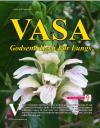 Bhavaprakash, most reputed treatise of ayurvedic herbs described Jamun as king of fruits. Its other names are nandi, rajjambul or surabhipatra, this purple and small fruit, more commonly known as jambuphalam in Sanskrit became synonymous with the landmass geographically described in ancient times as jambudweep, which included the indian sub continent. Botanically known as Syzygium cumini, its appearance coincides with season's first showers.
Ancient exponents of ayurveda praised the prophylactic and therapeutic properties of jamun and described it as panacea for summer and monsoon ills. It has been mentioned as a delicious and detoxifying appetizer. Jamun has properties that prevent excessive urination or sweating and it is also a thirst retardant and blood purifier. Jamun alleviates kapha and pitta and to top it all, it is a very popular herbal medicine that controls diabetes.
Almost all parts of the jamun tree, such as the bark, the leaves, the fruit and the seeds are known to possess medicinal properties. The bark is acrid and bitter in taste and is a very good astringent. it is used in diarrhoea and dysentery and also in conditions where the patient passes blood mixed stool.
Bhavaprakash, most reputed treatise of ayurvedic herbs described Jamun as king of fruits. Its other names are nandi, rajjambul or surabhipatra, this purple and small fruit, more commonly known as jambuphalam in Sanskrit became synonymous with the landmass geographically described in ancient times as jambudweep, which included the indian sub continent. Botanically known as Syzygium cumini, its appearance coincides with season's first showers.
Ancient exponents of ayurveda praised the prophylactic and therapeutic properties of jamun and described it as panacea for summer and monsoon ills. It has been mentioned as a delicious and detoxifying appetizer. Jamun has properties that prevent excessive urination or sweating and it is also a thirst retardant and blood purifier. Jamun alleviates kapha and pitta and to top it all, it is a very popular herbal medicine that controls diabetes.
Almost all parts of the jamun tree, such as the bark, the leaves, the fruit and the seeds are known to possess medicinal properties. The bark is acrid and bitter in taste and is a very good astringent. it is used in diarrhoea and dysentery and also in conditions where the patient passes blood mixed stool.
Ash of the Jamun leaves is an essential ingredient of many popular tooth powders and is a very effective remedy of spongy gums. Its fragrance helps to cure bad breath.
The jamun fruit has more varied uses than any other part of the tree. Its fruit is largely eaten raw and its peculiar pulp leaves a dark purple tinge on the tongue for several hours. Apart from containing oxalic and tannic acids and certain alkaloids, it is also rich in carbohydrates, minerals and vitamins. The ripe fruit is carminative, digestive, coolant and liver stimulant. The Jamun vinegar also has similar properties.
Uses
• People in the countryside use ten to twenty ml juice of Jamun leaves to control non specific epistaxis (nasal bleeding). The same juice is effective in case of nausea and vomiting cause by indigestion and gastritis.
• Due to its astringent properties, its bark is used in ulcerative colitis. Taking one gm of its dried powder along with the bark of kutaj tree twice a day controls stool frequency and also helps reduce bleeding from intestinal ulcers.
• The ash a jamun leaves mixed with a equal amount of the ash of hard almond shell makes an excellent tooth paste. Its regular use strengthens the teeth by checking bleeding and gum infection. to bad breath, a little pepper mint can be mixed in this tooth powder.
Jamun seeds are used to control diabetes since time immemorial. After being powdered, they can be used independently or with any other anti-diabetic medicine. The famous Basant Kusmakr Rasa, if used with one gram of powder of Jamun seeds, besides controlling the frequency of urine, helps in lowering the sugar level both in urine and blood.
Precaution: However, unripe jamun should not be eaten. Overeating of ripe jamun can cause hyperacidity and retention of gas in the abdomen. To counter these conditions half teaspoonful of roasted jeera powder and a pinch of black salt should be taken with warm water.
Sanjivani Ayurvedic Centre,
Near Rose Garden,
Ludhiana (Pb.) India.






 October 2020
October 2020
 Jan 2020
Jan 2020
 June 2019
June 2019
 January-February 2019
January-February 2019
 Augest-September
Augest-September
 April 2018
April 2018
 November 2017
November 2017
 June 2017
June 2017
 November 2016
November 2016
 September 2015
September 2015
 March 2015
March 2015
 July 2014
July 2014
 January 2014
January 2014
 July2013
July2013
 March 2013
March 2013
 May 2012
May 2012
 May 2011
May 2011
 Sep 2010
Sep 2010
 Jun 2010
Jun 2010
 Feb 2010
Feb 2010
 December 2009
December 2009
 August 2009
August 2009
 June 2009
June 2009
 Feb 2009
Feb 2009
 December 2008
December 2008
 October 2008
October 2008
 March 2008
March 2008
 July 2008
July 2008
 May 2008
May 2008